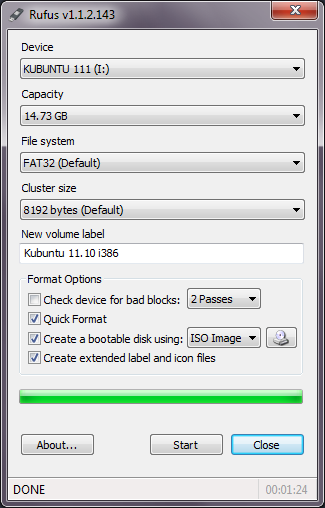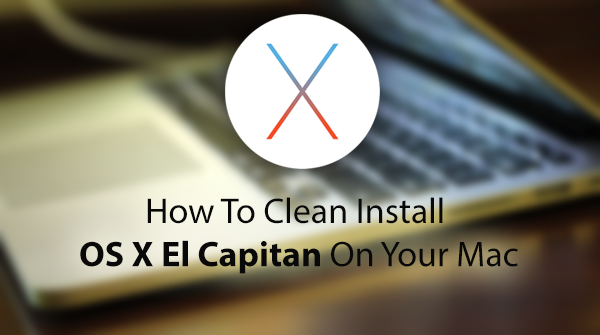Oct 01, 2015 OS X El Capitan is finally here, and if you're looking to install Apple's new desktop OS fresh from the ground up, then you'll be needing a bootable USB flash drive to get started with the process. Bootable USB Stick - macOS X El Capitan 10.11 - Full OS Install, Reinstall, Recovery and Upgrade SANDISK USB FLASH DRIVE 2.0/3.1 - 16GB - 5 years warranty Latest certificate (expires These USBs are NOT produced by Apple.
Create a bootable USB drive for macOS X versions including El Capitan, Yosemite, Mavericks, Sierra, High Sierra, and Mojave.
Sep 30, 2015 An 8GB or larger USB Flash Drive like these, this will be formatted and turn into the OS X El Capitan bootable installer; The OS X El Capitan installer application must be on the Mac and in the /Applications/ folder, download OS X El Capitan here if you haven’t done so yet (yes. You can re-download it). Therefore, you can create bootable USB for your Mac using Transmac on windows 10/7/8/8.1 here you will learn the easiest method of creating bootable USB. As you know that Mac OS EL Capitan is the newest version among Mac. In here just follow my steps to create a bootable USB installer for your Mac. Is the twelfth major of the Mac operating system. Jun 11, 2015 An 8GB or larger USB Flash Drive, this will be formatted and turn into the OS X El Capitan bootable installer; The OS X El Capitan installer application, this can be downloaded from Apple (either as Public Beta or Developer Beta, or preferably the GM Candidate) Naturally, you’ll also need a OS X 10.11 compatible Mac for the destination.
It was 2009 when Apple last released a new operating system on physical media. Things have proceeded remarkably smoothly since version 10.7 switched to download-only installers, but there are still good reasons to want an old, reliable USB stick. For instance, if you find yourself doing multiple installs, a USB drive may be faster than multiple downloads (especially if you use a USB 3.0 drive). Or maybe you need a recovery disk for older Macs that don't support the Internet Recovery feature. Whatever the reason, you're in luck, because it's not hard to make one.
As with last year, there are two ways to get it done. There's the super easy way with the graphical user interface and the only slightly less easy way that requires some light Terminal use. Here's what you need to get started.
- A Mac that you have administrator access to, duh. We've created El Capitan USB stick from both Yosemite and El Capitan, but your experience with other versions may vary.
- An 8GB or larger USB flash drive or an 8GB or larger partition on some other kind of external drive. For newer Macs, use a USB 3.0 drive—it makes things significantly faster.
- The OS X 10.11 El Capitan installer from the Mac App Store in your Applications folder. The installer will delete itself when you install the operating system, but it can be re-downloaded if necessary.
- If you want a GUI, you need the latest version of Diskmaker X app. Version 5 is the one with official El Capitan support.
- Diskmaker X is free to download, but the creator accepts donations if you want to support his efforts.

How To Make A Usb Boot For El Capitan Boot
El Capitan Bootable Usb Installer
The easy way
Once you've obtained all of the necessary materials, connect the USB drive to your Mac and run the Diskmaker X app. The app will offer to make installers for OS X 10.9, 10.10, and 10.11, and it should run on OS X versions all the way back to 10.7—support for 10.6 was dropped in the most recent release.
Diskmaker X has actually been around since the days of OS X 10.7 (it was previously known as Lion Diskmaker), and it's still the easiest GUI-based way to go without intimidating newbies. If you're comfortable with the command line, it's still possible to create a disk manually using a Terminal command, which we'll cover momentarily.
Select OS X 10.11 in Diskmaker X, and the app should automatically find the copy you've downloaded to your Applications folder. It will then ask you where you want to copy the files—click 'An 8GB USB thumb drive' if you have a single drive to use or 'Another kind of disk' to use a partition on a larger drive or some other kind of external drive. Choose your disk (or partition) from the list that appears, verify that you'd like to have the disk (or partition) erased, and then wait for the files to copy over. The process is outlined in screenshots above.
The only slightly less-easy way

If you don't want to use Diskmaker X, Apple has actually included a terminal command that can create an install disk for you. /ms-office-2019-for-mac-catalina/. Assuming that you have the OS X El Capitan installer in your Applications folder and you have a Mac OS X Extended (Journaled)-formatted USB drive named 'Untitled' mounted on the system, you can create an El Capitan install drive by typing the following command into the Terminal.
sudo /Applications/Install OS X El Capitan.app/Contents/Resources/createinstallmedia --volume /Volumes/Untitled --applicationpath /Applications/Install OS X El Capitan.app --nointeraction
How To Make A Bootable Usb For Mac El Capitan
The command will erase the disk and copy the install files over. Give it some time, and your volume will soon be loaded up with not just the OS X installer but also an external recovery partition that may come in handy if your hard drive dies and you're away from an Internet connection.
Make El Capitan Usb Installer
Whichever method you use, you should be able to boot from your new USB drive either by changing the default Startup Disk in System Preferences or by holding down the Option key at boot and selecting the drive. Once booted, you'll be able to install or upgrade El Capitan as you normally would.
I'm a bit confused by your post on what you are trying to do here. Are you trying to boot into Recovery Mode to install macOS to an external USB drive or are you trying to boot from a macOS USB installer to install macOS to the internal drive?
Here are the instructions for creating a bootable macOS USB installer:
Make sure to carefully read the section regarding macOS 10.11 as there are extra steps required to extract the real installer from the downloaded .dmg archive to the Applications folder. After running the .pkg file from the mounted .dmg file you can then proceed to use the command line to create the bootable macOS USB installer itself.
El Capitan Boot Disk
Macs are very picky about the drives used for booting a Mac plus the quality of many USB sticks is extremely poor so try using another USB stick especially a different brand.

When erasing the drive make sure to select the whole physical drive within Disk Utility and erase the physical drive as GUID partition and MacOS Extended (Journaled). The physical drive should be the top most item which is usually identified by the make & model of the drive itself.
Aug 21, 2021 12:52 PM